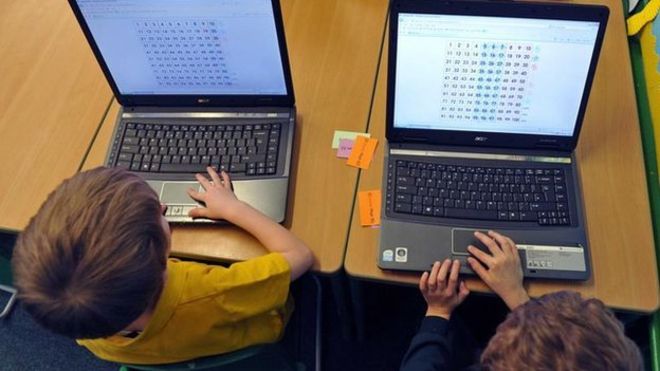Information and communication technology has revolutionised virtually every aspect of our life and work.
Students unable to navigate through a complex digital landscape will no longer be able to participate fully in the economic, social and cultural life around them.
But those in charge of educating today’s “connected” learners are confronted with challenging issues, from information overload to plagiarism, from protecting children from online risks such as fraud, violations of privacy or online bullying to setting an adequate and appropriate media diet.
We expect schools to educate our children to become critical consumers of internet services and electronic media. And we expect them to raise awareness about the risks that children face online and how to avoid them.
The Pisa assessments now provide first-of-its-kind internationally comparative analysis of the digital skills that students have acquired, and of the learning environments designed to develop these skills.
These data show that the reality in schools lags considerably behind the promise of technology.
In 2012, 96% of 15-year-old students in OECD (Organisation for Economic Co-operation and Development) countries reported that they have a computer at home, but only 72% reported that they use a desktop, laptop or tablet computer at school, and in some countries fewer than one in two students reported doing so.
‘Disappointing’
Even where computers are used in the classroom, their impact on student performance is mixed at best.
Students who use computers moderately at school tend to have somewhat better learning outcomes than students who use computers rarely.
But students who use computers very frequently at school do a lot worse in most learning outcomes, even after accounting for social background and student demographics.
The results also show no appreciable improvements in student achievement in reading, mathematics or science in the countries that had invested heavily in information and communication technology (ICT) for education.
And perhaps the most disappointing finding is that technology seems of little help in bridging the skills divide between advantaged and disadvantaged students.
Put simply, ensuring that every child attains a baseline level of proficiency in reading and mathematics seems to do more to create equal opportunities in a digital world than expanding or subsidising access to hi-tech devices and services.
Last but not least, most parents and teachers will not be surprised by the finding that students who spend more than six hours on line per weekday outside of school are particularly at risk of reporting that they feel lonely at school, and that they arrived late for school or skipped days of school in the two weeks prior to the Pisa test.
One interpretation is that building deep, conceptual understanding and higher-order thinking requires intensive teacher-student interactions, and technology sometimes distracts from this valuable human engagement.
Copy and paste
Another interpretation is that schools have not yet become good enough at the kind of pedagogies that make the most of technology; that adding 21st-Century technologies to 20th-Century teaching practices will just dilute the effectiveness of teaching.
If students use smartphones to copy and paste prefabricated answers to questions, it is unlikely to help them to become smarter. Educators who want to ensure that students become smarter than a smartphone need to think harder about the pedagogies they are using to teach them.
Technology can amplify great teaching but it seems technology cannot replace poor teaching.
The impact of technology on education delivery remains sub-optimal, because we may over-estimate the digital skills of both teachers and students, because of naive policy design and implementation strategies, because of a poor understanding of pedagogy, or because of the generally poor quality of educational software and courseware.
The results suggest that the connections among students, computers and learning are neither simple nor hard-wired; and the real contributions ICT can make to teaching and learning have yet to be fully realised and exploited.
But the findings must not lead to despair. School systems need to get the digital agenda right in order to provide educators with learning environments that support 21st Century pedagogies and provide children with the 21st Century skills they need to succeed in tomorrow’s world.
Teacher training
Technology is the only way to dramatically expand access to knowledge. Why should students be limited to a textbook that was printed two years ago, and maybe designed 10 years ago, when they could have access to the world’s best and most up-to-date textbook?
Equally important, technology allows teachers and students to access specialised materials well beyond textbooks, in multiple formats, with little time and space constraints. Technology provides great platforms for collaboration in knowledge creation where teachers can share and enrich teaching materials.
Perhaps most importantly, technology can support new pedagogies that focus on learners as active participants.
To deliver on the promises technology holds, countries will need a convincing strategy to build teachers’ capacity. And policy-makers need to become better at building support for this agenda.
Given the uncertainties that accompany all change, educators will always opt to maintain the status quo. To mobilise support for more technology-rich schools, policy needs to become better at communicating the need and building support for change.
Education systems need to invest in capacity development and change-management skills, develop sound evidence and feed this evidence back to institutions, and back all that up with sustainable financing.
Last but not least, it is vital that teachers become active agents for change, not just in implementing technological innovations, but in designing them too.




